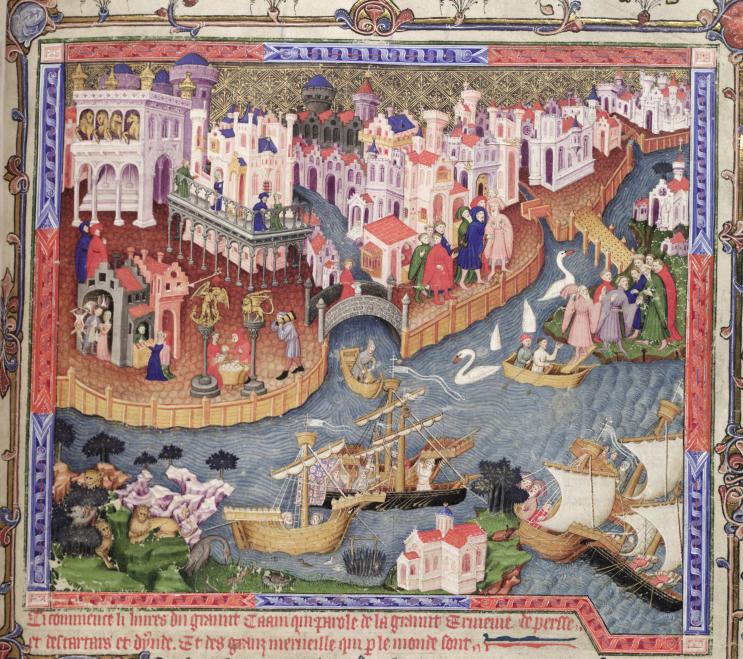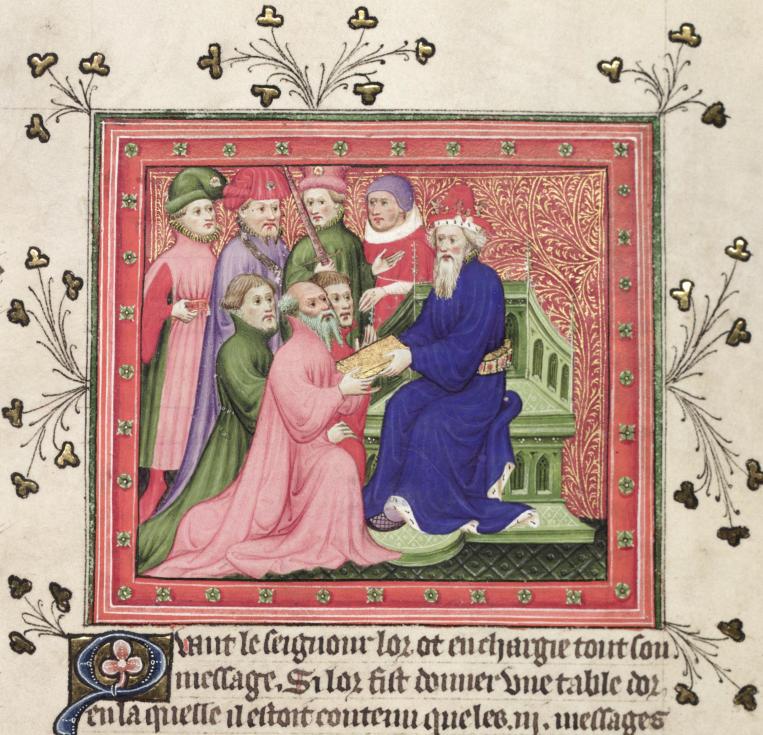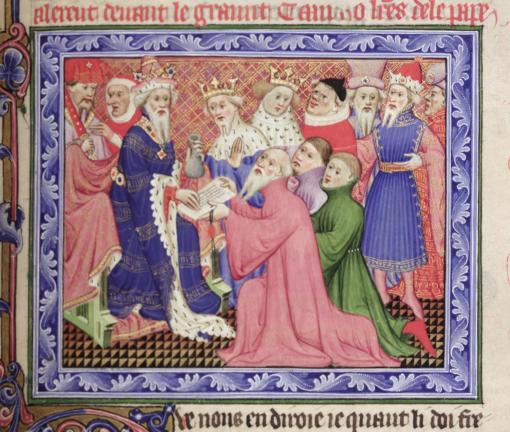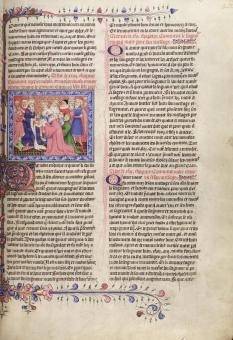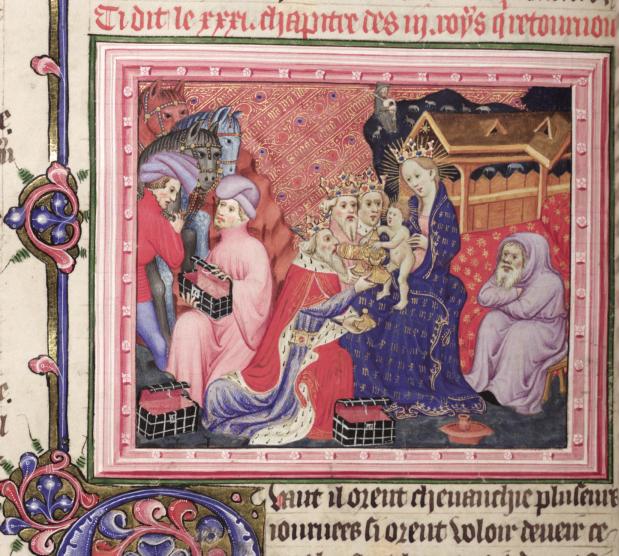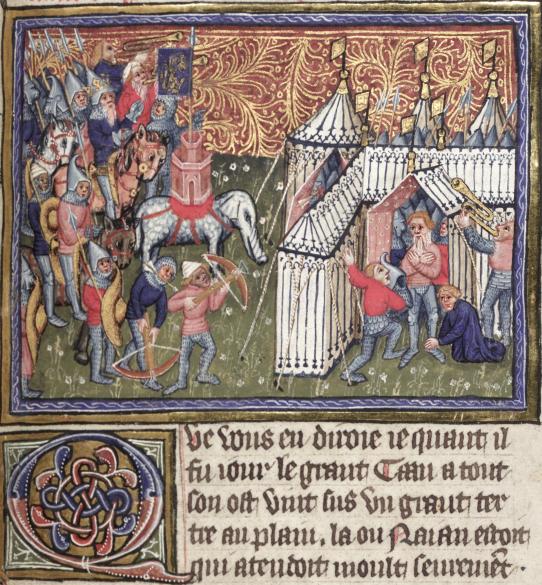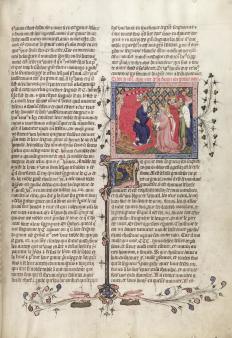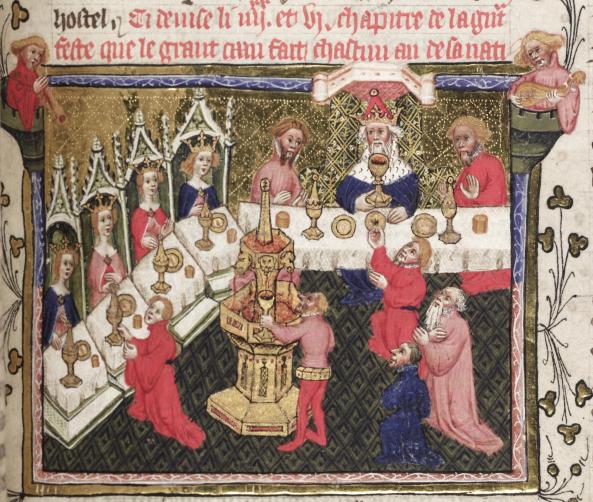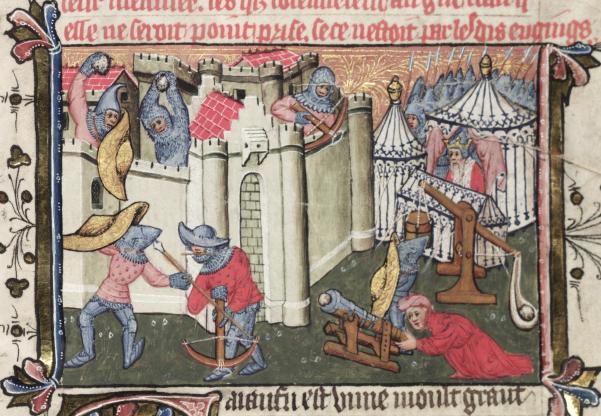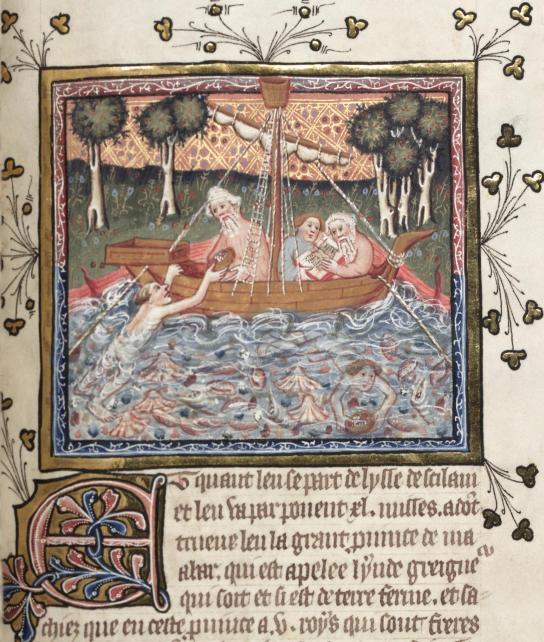
Candida Martinelli's Italophile Site

Main
Page This family-friendly site celebrates Italian culture for the enjoyment of children and
adults. Site-Overview
Excerpts Below: 1 -
How the Chinese burn black stones (coal) 2 -
The Maji, three Kings, a fable heard along the way 3 -
Kublai Khan and his four wives 4 -
How the dead Khans are buried 5 -
Giant, reclining Buddas 6 -
Xanadu's pleasure dome 7 -
The Khan's palace compound in Beijing 8 -
Ancient Beijing during the Yuan (Mongol) Dynasty 9 -
Nomadic Tartars (Mongols) 10
- Feasting with the Khan 11
- The Khan goes falconing 12
- The tent-city erected for the hunting party Sections Below:
Illumination Illustrations
from 1400 Book (unique and very beautiful!) Marco describes how in China people burned coal (black stones) to
warm their homes and heat their water. This is in contrast to
Venice and other places where coal was not found locally, and where they
burned wood, which is scarce and cumbersome. You'll note that
taking a bath 3 times a week was seen as odd. Medieval Europe was
a smelly place, and not just from the dirty people, but from the
pervasive smell of burning wood. "It is a
fact that all over the country of Cathay there is a kind of black stones
existing in beds in the mountains, which they dig out and burn like
firewood. If you supply the fire with them at night, and see that they
are well kindled, you will find them still alight in the morning; and
they make such capital fuel that no other is used throughout the
country. It is true that they have plenty of wood also, but they do not
burn it, because those stones burn better and cost less.
"Moreover with that vast number of people, and the number of hot baths
that they maintain--for every one has such a bath at least three times a
week, and in winter if possible every day, whilst every nobleman and man
of wealth has a private bath for his own use--the wood would not suffice
for the purpose. This is an excerpt from Marco's book about the Three Kings or the
Magi who visited Jesus of Nazareth just after Jesus's birth. There are many tales about the
Magi,
in Jewish writings, Muslim writings, and Christian writings. And
while none agree completely, they
are all, however, very entertaining. "Persia is a great
country, which was in old times very illustrious and powerful; but now
the Tartars have wasted and destroyed it. In Persia is the city of SABA,
from which the Three Magi set out when they went to worship Jesus
Christ; and in this city they are buried, in three very large and
beautiful monuments, side by side. And above them there is a square
building, carefully kept. 'The bodies are
still entire, with the hair and beard remaining. One of these was called
Jaspar, the second Melchior, and the third Balthasar. Messer Marco Polo
asked a great many questions of the people of that city as to those
Three Magi, but never one could he find that knew aught of the matter,
except that these were three kings who were buried there in days of old.
'However, at a
place three days' journey distant he heard of what I am going to tell
you. He found a village there which goes by the name of CALA ATAPERISTAN,
which is as much as to say, "The Castle of the Fire-worshippers." And
the name is rightly applied, for the people there do worship fire, and I
will tell you why.
'They relate that
in old times three kings of that country went away to worship a Prophet
that was born, and they carried with them three manner of offerings,
Gold, and Frankincense, and Myrrh; in order to ascertain whether that
Prophet were God, or an earthly King, or a Physician. For, said they, if
he take the Gold, then he is an earthly King; if he take the Incense he
is God; if he take the Myrrh he is a Physician. 'So it came to pass
when they had come to the place where the Child was born, the youngest
of the Three Kings went in first, and found the Child apparently just of
his own age; so he went forth again marvelling greatly. 'The middle one
entered next, and like the first he found the Child seemingly of his own
age; so he also went forth again and marvelled greatly. 'Lastly, the eldest
went in, and as it had befallen the other two, so it befell him. And he
went forth very pensive. 'And when the three
had rejoined one another, each told what he had seen; and then they all
marvelled the more. So they agreed to go in all three together, and on
doing so they beheld the Child with the appearance of its actual age, to
wit, some thirteen days. 'Then they adored,
and presented their Gold and Incense and Myrrh. And the Child took all
the three offerings, and then gave them a small closed box; whereupon
the Kings departed to return into their own land. And when they had
ridden many days they said they would see what the Child had given them.
So they opened the little box, and inside it they found a stone. On
seeing this they began to wonder what this might be that the Child had
given them, and what was the import thereof. 'Now the
signification was this: when they presented their offerings, the Child
had accepted all three, and when they saw that they had said within
themselves that He was the True God, and the True King, and the True
Physician. And what the gift of the stone implied was that this Faith
which had begun in them should abide firm as a rock. For He well knew
what was in their thoughts. 'Howbeit, they had
no understanding at all of this signification of the gift of the stone;
so they cast it into a well. Then straightway a fire from Heaven
descended into that well wherein the stone had been cast. And when the
Three Kings beheld this marvel they were sore amazed, and it greatly
repented them that they had cast away the stone; for well they then
perceived that it had a great and holy meaning.
'So they took of
that fire, and carried it into their own country, and placed it in a
rich and beautiful church. And there the people keep it continually
burning, and worship it as a god, and all the sacrifices they offer are
kindled with that fire. 'And if ever the
fire becomes extinct they go to other cities round about where the same
faith is held, and obtain of that fire from them, and carry it to the
church. And this is the reason why the people of this country worship
fire. They will often go ten days' journey to get of that fire.
'Such then was the
story told by the people of that Castle to Messer Marco Polo; they
declared to him for a truth that such was their history, and that one of
the three kings was of the city called SABA, and the second of AVA, and
the third of that very Castle where they still worship fire, with
the people of all the country round about." Marco Polo captured the imaginations of Europeans with his stories of
adventure in foreign lands. His books inspired other writers to
imagine what a young Marco Polo might have been like, and to use his
made-up story to inspired young readers to greatness.
Here Marco described Kublai Khan and his four wives. "The personal appearance of the Great Kaan, Lord of Lords, whose name
is Cublay, is such as I shall now tell you. He is of a good stature,
neither tall nor short, but of a middle height. He has a becoming amount
of flesh, and is very shapely in all his limbs. His complexion is white
and red, the eyes black and fine, the nose well formed and well set on. 'He has four wives, whom he retains permanently as his legitimate
consorts; and the eldest of his sons by those four wives ought by rights
to be emperor;--I mean when his father dies. Those four ladies are
called empresses, but each is distinguished also by her proper name. 'And each of them has a special court of her own, very grand and
ample; no one of them having fewer than 300 fair and charming damsels.
They have also many pages and eunuchs, and a number of other attendants
of both sexes; so that each of these ladies has not less than 10,000
persons attached to her court." Marco Polo became a household name, and represented the mysterious
and foreign far east. Products such as tea were named for him over
the years.
This is an excerpt from Marco Polo's book, telling how the Khans were
brought to their chosen place of burial. "To Chingis-khan succeeded Cyhn-khan; the third was Bathyn-khan, the
fourth Esu-khan, the fifth Mongu-khan, the sixth Kublai-khan, who became
greater and more powerful than all the others, inasmuch as he inherited
what his predecessors possessed, and afterwards, during a reign of
nearly sixty years, acquired, it may be said, the remainder of the
world. 'The title of khan, or kaan, is equivalent to emperor in our
language. 'It has been an invariable custom that all the grand khans and chiefs
of the race of Chingis-khan should be carried for interment to a certain
lofty mountain named Altai, and in whatever place they may happen to
die, even if it should be at the distance of a hundred days' journey,
they are nevertheless conveyed there." [ed. The Altai Mountains are a mountain range in central Asia, where
Russia, China, Mongolia and Kazakhstan come together. Here are two
images.] "It is likewise the custom, during the progress of removing the
bodies of these princes, for those who form the escort to sacrifice such
persons as they chance to meet on the road, saying to them, "Depart for
the next world, and there attend upon your deceased master," believing
that all they kill do actually become his servants in the next life. 'They do the same also with respect to horses, killing the best of
the stud, in order that he may have the use of them. 'When the corpse of Mongu was transported to this mountain, the
horsemen who accompanied it, having this blind and horrible persuasion,
slew upwards of twenty thousand persons who fell in their way." Marco Polo is not forgotten in Asia, as these images show. He
helped show the east not as aggressive hoards, but as civilized nations
with great resources at their disposal. He also showed that trade
contacts could lead to mutual understanding, dialog and security.
Marco describes giant, reclining Buddas in one town. These were
common along the Silk Route. In the news in the last years have
been the giant, standing Buddas of Afghanistan. But archeologists
have found the remains of giant, reclining Buddas at the same site. "Campichu is also a city of Tangut, and a very great and noble one.
Indeed it is the capital and place of government of the whole province
of Tangut. [NOTE 1] 'The people are Idolaters [ed. Buddists], Saracens [ed. Arabs-Moslims],
and Christians, and the latter have three very fine churches in the
city, whilst the Idolaters have many minsters and abbeys after their
fashion. 'In these they have an enormous number of idols, both small and
great, certain of the latter being a good ten paces in stature; some of
them being of wood, others of clay, and others yet of stone. 'They are all highly polished, and then covered with gold. The great
idols of which I speak lie at length. And round about them there are
other figures of considerable size, as if adoring and paying homage
before them." Over the years that followed the publication of Marco Polo's book,
explorers sailed out across the seas and discovered that Marco Polo was
not making things up in his book. The places he mentioned really
existed, sometimes altered from his description, but they really
existed. They were included in maps of the world, some used by
Columbus on his travels. This excerpt about the Khan's summer palace was the inspiration for the poet Coleridge's famous poem
'Xanadu' that began: "In Xanadu did Kubla Khan A stately
pleasure-dome decree...". "And when you have ridden three days from the city last mentioned,
between north-east and north, you come to a city called CHANDU,which was
built by the Kaan [ed. Khan] now reigning. 'There is at this place a very fine marble Palace, the rooms of which
are all gilt and painted with figures of men and beasts and birds, and
with a variety of trees and flowers, all executed with such exquisite
art that you regard them with delight and astonishment. 'Round this Palace a wall is built, inclosing a compass of 16 miles,
and inside the Park there are fountains and rivers and brooks, and
beautiful meadows, with all kinds of wild animals (excluding such as are
of ferocious nature), which the Emperor has procured and placed there to
supply food for his gerfalcons and hawks, which he keeps there in mew.
Of these there are more than 200 gerfalcons alone, without reckoning the
other hawks. 'The Kaan himself goes every week to see his birds sitting in mew,
and sometimes he rides through the park with a leopard behind him on his
horse's croup; and then if he sees any animal that takes his fancy, he
slips his leopard at it,and the game when taken is made over to feed the
hawks in mew. This he does for diversion." Here is a lovely site set up by a university, that matches comments
in Marco Polo's text with actual locations on a map. Go to the
site, and use the clickable map. A
university site offers an interactive map with locations mentioned
by Marco Polo, and what he said about the location. Here are some of Marco's descriptions of the Khan's palace compound
in Cambaluc, or Peking, or Beijing. Today, it is called the
Forbidden City, enclosed in the Imperial City, but what exist today was
built several centuries later. When the Mongol rulers, the
Yuan dynasty, were overthrown, their city was raised to the ground, only
to be built over by a later dynasty. "You must know that for three months of the year, to wit December,
January, and February, the Great Kaan resides in the capital city of
Cathay, which is called CAMBALUC, and which is at the north-eastern
extremity of the country. In that city stands his great Palace, and now
I will tell you what it is like. 'It is enclosed all round by a great wall forming a square, each side
of which is a mile in length; that is to say, the whole compass thereof
is four miles. This you may depend on; it is also very thick, and a good
ten paces in height, whitewashed and loop-holed all round. 'At each angle of the wall there is a very fine and rich palace in
which the war-harness of the Emperor is kept, such as bows and quivers,
saddles and bridles, and bowstrings, and everything needful for an army. 'Also midway between every two of these Corner Palaces there is
another of the like; so that taking the whole compass of the enclosure
you find eight vast Palaces stored with the Great Lord's harness of war. 'And you must understand that each Palace is assigned to only one
kind of article; thus one is stored with bows, a second with saddles, a
third with bridles, and so on in succession right round.
[ed. Mongol Battle outfit from this period] 'The great wall has five gates on its southern face, the middle one
being the great gate which is never opened on any occasion except when
the Great Kaan himself goes forth or enters. Close on either side of
this great gate is a smaller one by which all other people pass; and
then towards each angle is another great gate, also open to people in
general; so that on that side there are five gates in all. 'Inside of this wall there is a second, enclosing a space that is
somewhat greater in length than in breadth. This enclosure also has
eight palaces corresponding to those of the outer wall, and stored like
them with the Lord's harness of war. This wall also hath five gates on
the southern face, corresponding to those in the outer wall, and hath
one gate on each of the other faces, as the outer wall hath also. 'In the middle of the second enclosure is the Lord's Great Palace,
and I will tell you what it is like. You must know that it is the
greatest Palace that ever was. Towards the north it is in contact with
the outer wall, whilst towards the south there is a vacant space which
the Barons and the soldiers are constantly traversing. [ed. This is the last Khan's palace in Mongolia, still built to a
similar design as that described by Marco Polo.] 'The Palace itself hath no upper story, but is all on the ground
floor, only the basement is raised some ten palms above the surrounding
soil and this elevation is retained by a wall of marble raised to the
level of the pavement, two paces in width and projecting beyond the base
of the Palace so as to form a kind of terrace-walk, by which people can
pass round the building, and which is exposed to view, whilst on the
outer edge of the wall there is a very fine pillared balustrade; and up
to this the people are allowed to come. 'The roof is very lofty, and the walls of the Palace are all covered
with gold and silver. They are also adorned with representations of
dragons, sculptured and gilt, beasts and birds, knights and idols, and
sundry other subjects. And on the ceiling too you see nothing but gold
and silver and painting. 'On each of the four sides there is a great marble staircase leading
to the top of the marble wall, and forming the approach to the Palace. 'The Hall of the Palace is so large that it could easily dine 6000
people; and it is quite a marvel to see how many rooms there are
besides. The building is altogether so vast, so rich, and so beautiful,
that no man on earth could design anything superior to it. 'The outside of the roof also is all coloured with vermilion and
yellow and green and blue and other hues, which are fixed with a varnish
so fine and exquisite that they shine like crystal, and lend a
resplendent lustre to the Palace as seen for a great way round. This
roof is made too with such strength and solidity that it is fit to last
for ever. 'On the interior side of the Palace are large buildings with halls
and chambers, where the Emperor's private property is placed, such as
his treasures of gold, silver, gems, pearls, and gold plate, and in
which reside the ladies and concubines. There he occupies himself at his
own convenience, and no one else has access. 'Between the two walls of the enclosure which I have described, there
are fine parks and beautiful trees bearing a variety of fruits. There
are beasts also of sundry kinds, such as white stags and fallow deer,
gazelles and roebucks, and fine squirrels of various sorts, with numbers
also of the animal that gives the musk, and all manner of other
beautiful creatures, insomuch that the whole place is full of them, and
no spot remains void except where there is traffic of people going and
coming. 'The parks are covered with abundant grass; and the roads through
them being all paved and raised two cubits above the surface, they never
become muddy, nor does the rain lodge on them, but flows off into the
meadows, quickening the soil and producing that abundance of herbage. 'From that corner of the enclosure which is towards the north-west
there extends a fine Lake, containing foison of fish of different kinds
which the Emperor hath caused to be put in there, so that whenever he
desires any he can have them at his pleasure. A river enters this lake
and issues from it, but there is a grating of iron or brass put up so
that the fish cannot escape in that way. 'Moreover on the north side of the Palace, about a bow-shot off,
there is a hill which has been made by art from the earth dug out of the
lake; it is a good hundred paces in height and a mile in compass. This
hill is entirely covered with trees that never lose their leaves, but
remain ever green. The Khan's Palace Compound 'And I assure you that wherever a beautiful tree may exist, and the
Emperor gets news of it, he sends for it and has it transported bodily
with all its roots and the earth attached to them, and planted on that
hill of his. No matter how big the tree may be, he gets it carried by
his elephants; and in this way he has got together the most beautiful
collection of trees in all the world. 'And he has also caused the whole hill to be covered with the ore of
azure, which is very green. And thus not only are the trees all green,
but the hill itself is all green likewise; and there is nothing to be
seen on it that is not green; and hence it is called the GREEN MOUNT;
and in good sooth 'tis named well. 'On the top of the hill again there is a fine big palace which is all
green inside and out; and thus the hill, and the trees, and the palace
form together a charming spectacle; and it is marvellous to see their
uniformity of colour! Everybody who sees them is delighted. And the
Great Kaan had caused this beautiful prospect to be formed for the
comfort and solace and delectation of his heart. 'You must know that beside the Palace (that we have been describing),
i.e. the Great Palace, the Emperor has caused another to be built just
like his own in every respect, and this he hath done for his son when he
shall reign and be Emperor after him. 'Hence it is made just in the same fashion and of the same size, so
that everything can be carried on in the same manner after his own
death. It stands on the other side of the lake from the Great Kaan's
Palace, and there is a bridge crossing the water from one to the other.
The Prince in question holds now a Seal of Empire, but not with such
complete authority as the Great Kaan, who remains supreme as long as he
lives. Here's another map for which I can't find the original location on
the web. It shows Marco Polo's travels from Venice to China (the
yellow line) and Marco father
and uncle's path to China, which are also described by Marco in his book), while
in China (the red lines that go south then north from Beijing), and on his way home to Venice
(the red lines). This is how Marco Polo describes ancient Beijing under the Yuan
Dynasty, the Mongol Dynasty. "Now there was on that spot in old times a great and noble city
called CAMBALUC, which is as much as to say in our tongue "The city of
the Emperor." 'But the Great Kaan was informed by his Astrologers that this city
would prove rebellious, and raise great disorders against his imperial
authority. So he caused the present city to be built close beside the
old one, with only a river between them. And he caused the people of the
old city to be removed to the new town that he had founded; and this is
called TAIDU. 'However, he allowed a portion of the people which he did not suspect
to remain in the old city, because the new one could not hold the whole
of them, big as it is. 'As regards the size of this (new) city you must know that it has a
compass of 24 miles, for each side of it hath a length of 6 miles, and
it is four-square. And it is all walled round with walls of earth which
have a thickness of full ten paces at bottom, and a height of more than
10 paces; but they are not so thick at top, for they diminish in
thickness as they rise, so that at top they are only about 3 paces
thick. And they are provided throughout with loop-holed battlements,
which are all whitewashed. 'There are 12 gates, and over each gate there is a great and handsome
palace, so that there are on each side of the square three gates and
five palaces; for (I ought to mention) there is at each angle also a
great and handsome palace. In those palaces are vast halls in which are
kept the arms of the city garrison. The West Gate of Beijing 'The streets are so straight and wide that you can see right along
them from end to end and from one gate to the other. And up and down the
city there are beautiful palaces, and many great and fine hostelries,
and fine houses in great numbers. 'All the plots of ground on which the houses of the city are built
are four-square, and laid out with straight lines; all the plots being
occupied by great and spacious palaces, with courts and gardens of
proportionate size. All these plots were assigned to different heads of
families. 'Each square plot is encompassed by handsome streets for traffic; and
thus the whole city is arranged in squares just like a chess-board, and
disposed in a manner so perfect and masterly that it is impossible to
give a description that should do it justice. 'Moreover, in the middle of the city there is a great clock--that is
to say, a bell--which is struck at night. And after it has struck three
times no one must go out in the city, unless it be for the needs of a
woman in labour, or of the sick. And those who go about on such errands
are bound to carry lanterns with them. 'Moreover, the established guard at each gate of the city is 1000
armed men; not that you are to imagine this guard is kept up for fear of
any attack, but only as a guard of honour for the Sovereign, who resides
there, and to prevent thieves from doing mischief in the town." This image from Wikipedia shows the Mongol empire over time, the same
time the Polos were traveling to and from the empire.
After it's growth, the empire was eventually
divided up. To see more detail, visit the
Wikipedia page for this image.
Here is another excerpt from Marco Polo's book, about the Tartars
(Mongolians). "The Tartars never remain fixed, but as the winter approaches remove
to the plains of a warmer region, to find sufficient pasture for their
cattle; and in summer they frequent cold areas in the mountains, where
there is water and verdure, and their cattle are free from the annoyance
of horse-flies and other biting insects. "During two or three months they go progressively higher and seek
fresh pasture, the grass not being adequate in any one place to feed the
multitudes of which their herds and flocks consist. "Their huts or tents are formed of rods covered with felt, exactly
round, and nicely put together, so they can gather them into one bundle,
and make them up as packages, which they carry along with them in their
migrations upon a sort of car with four wheels. "When they have occasion to set them up again, they always make the
entrance front to the south. [ed. gehr or a yurt] "Besides these cars they have a superior kind of vehicle upon two
wheels, also covered with black felt so well that they protect those
within it from wet during a whole day of rain. These are drawn by oxen
and camels, and convey their wives and children, their utensils, and
whatever provisions they require. "The women attend to their trading concerns, buy and sell, and
provide everything necessary for their husbands and their families; the
time of the men is devoted entirely to hunting, hawking, and matters
that relate to the military life. They have the best falcons in the
world, and also the best dogs. "They live entirely upon flesh and milk, eating the produce of their
sport, and a certain small animal, not unlike a rabbit, called by our
people Pharaoh's mice, which during the summer season are found in great
abundance in the plains. They eat flesh of every description, horses,
camels, and even dogs, provided they are fat. "They drink mares' milk, which they prepare in such a manner that it
has the qualities and flavor of white wine. They term it in their
language kemurs. "Their women are not excelled in the world for chastity and decency
of conduct, nor for love and duty to their husbands. Infidelity to the
marriage bed is regarded by them as a vice not merely dishonorable, but
of the most infamous nature; while on the other hand it is admirable to
observe the loyalty of the husbands towards their wives, amongst whom,
although there are perhaps ten or twenty, there prevails a highly
laudable degree of quiet and union. "No offensive language is ever heard, their attention being fully
occupied with their traffic (as already mentioned) and their several
domestic employments, such as the provision of necessary food for the
family, the management of the servants, and the care of the children, a
common concern. "And the virtues of modesty and chastity in the wives are more
praiseworthy because the men are allowed the indulgence of taking as
many as they choose. Their expense to the husband is not great, and on
the other hand the benefit he derives from their trading, and from the
occupations in which they are constantly engaged, is considerable; on
which account when he receives a young woman in marriage, he pays a
dower to her parent. "The wife who is the first espoused has the privilege of superior
attention, and is held to be the most legitimate, which extends also to
the children borne by her. In consequence of this unlimited number of
wives, the offspring is more numerous than amongst any other people. "Upon the death of the father, the son may take to himself the wives
he leaves behind, with the exception of his own mother. They cannot take
their sisters to wife, but upon the death of their brothers they can
marry their sisters-in-law. Every marriage is solemnized with great
ceremony. These images, like many on this page, are illustrations from reprints
of Marco Polo's book over the years. They show the romanticization
that has surrounded the work since it's earliest publication.
This excerpt is about how feasts are held with the Khan presiding.
I especially like the treatment of people who step on the threshold,
considered to be unlucky just about everywhere. "And when the Great Kaan sits at table on any great court occasion,
it is in this fashion. His table is elevated a good deal above the
others, and he sits at the north end of the hall, looking towards the
south, with his chief wife beside him on the left. 'On his right sit his sons and his nephews, and other kinsmen of the
Blood Imperial, but lower, so that their heads are on a level with the
Emperor's feet. And then the other Barons sit at other tables lower
still. So also with the women; for all the wives of the Lord's sons, and
of his nephews and other kinsmen, sit at the lower table to his right;
and below them again the ladies of the other Barons and Knights, each in
the place assigned by the Lord's orders. 'The tables are so disposed that the Emperor can see the whole of
them from end to end, many as they are. Further, you are not to suppose
that everybody sits at table; on the contrary, the greater part of the
soldiers and their officers sit at their meal in the hall on the
carpets. Outside the hall will be found more than 40,000 people; for
there is a great concourse of folk bringing presents to the Lord, or
come from foreign countries with curiosities. 'In a certain part of the hall near where the Great Kaan holds his
table, there is set a large and very beautiful piece of workmanship in
the form of a square coffer, or buffet, about three paces each way,
exquisitely wrought with figures of animals, finely carved and gilt. The
middle is hollow, and in it] stands a great vessel of pure gold, holding
as much as an ordinary butt; and at each corner of the great vessel is
one of smaller size of the capacity of a firkin, and from the former the
wine or beverage flavoured with fine and costly spices is drawn off into
the latter. 'And on the buffet aforesaid are set all the Lord's drinking vessels,
among which are certain pitchers of the finest gold, which are called
verniques, and are big enough to hold drink for eight or ten persons.
And one of these is put between every two persons, besides a couple of
golden cups with handles, so that every man helps himself from the
pitcher that stands between him and his neighbour. And the ladies are
supplied in the same way. The value of these pitchers and cups is
something immense; in fact, the Great Kaan has such a quantity of this
kind of plate, and of gold and silver in other shapes, as no one ever
before saw or heard tell of, or could believe. 'There are certain Barons specially deputed to see that foreigners,
who do not know the customs of the Court, are provided with places
suited to their rank; and these Barons are continually moving to and fro
in the hall, looking to the wants of the guests at table, and causing
the servants to supply them promptly with wine, milk, meat, or whatever
they lack. 'At every door of the hall (or, indeed, wherever the Emperor may be)
there stand a couple of big men like giants, one on each side, armed
with staves. Their business is to see that no one steps upon the
threshold in entering, and if this does happen, they strip the offender
of his clothes, and he must pay a forfeit to have them back again; or in
lieu of taking his clothes, they give him a certain number of blows. 'If they are foreigners ignorant of the order, then there are Barons
appointed to introduce them, and explain it to them. They think, in
fact, that it brings bad luck if any one touches the threshold. Howbeit,
they are not expected to stick at this in going forth again, for at that
time some are like to be the worse for liquor, and incapable of looking
to their steps. And you must know that those who wait upon the Great Kaan with his
dishes and his drink are some of the great Barons. They have the mouth
and nose muffled with fine napkins of silk and gold, so that no breath
nor odour from their persons should taint the dish or the goblet
presented to the Lord. 'And when the Emperor is going to drink, all the musical instruments,
of which he has vast store of every kind, begin to play. And when he
takes the cup all the Barons and the rest of the company drop on their
knees and make the deepest obeisance before him, and then the Emperor
doth drink. But each time that he does so the whole ceremony is
repeated. 'I will say nought about the dishes, as you may easily conceive that
there is a great plenty of every possible kind. But you should know that
in every case where a Baron or Knight dines at those tables, their wives
also dine there with the other ladies. 'And when all have dined and the tables have been removed, then come
in a great number of players and jugglers, adepts at all sorts of
wonderful feats, and perform before the Emperor and the rest of the
company, creating great diversion and mirth, so that everybody is full
of laughter and enjoyment. And when the performance is over, the company
breaks up and every one goes to his quarters. Marco Polo is one of the early Italian explorers and is honored in
Italy as a pioneer. Marco describes how the Khan goes falconing after his three month stay in
the capital Cambaluc. "And so the Emperor follows this road that I have mentioned, leading
along in the vicinity of the Ocean Sea (which is within two days'
journey of his capital city, Cambaluc), and as he goes there is many a
fine sight to be seen, and plenty of the very best entertainment in
hawking; in fact, there is no sport in the world to equal it! 'The Emperor himself is carried upon four elephants in a fine chamber
made of timber, lined inside with plates of beaten gold, and outside
with lions' skins for he always travels in this way on his fowling
expeditions, because he is troubled with gout. 'He always keeps beside him a dozen of his choicest gerfalcons, and
is attended by several of his Barons, who ride on horseback alongside.
And sometimes, as they may be going along, and the Emperor from his
chamber is holding discourse with the Barons, one of the latter shall
exclaim: "Sire! Look out for Cranes!" 'Then the Emperor instantly has the top of his chamber thrown open,
and having marked the cranes he casts one of his gerfalcons, whichever
he pleases; and often the quarry is struck within his view, so that he
has the most exquisite sport and diversion, there as he sits in his
chamber or lies on his bed; and all the Barons with him get the
enjoyment of it likewise! 'So it is not without reason I tell you that I do not believe there
ever existed in the world or ever will exist, a man with such sport and
enjoyment as he has, or with such rare opportunities." Marco describes the Khan's tent-city when he goes hunting after his
three
months in the capital city. "And when he has travelled till he reaches a place called CACHAR
MODUN,there he finds his tents pitched, with the tents of his Sons, and
his Barons, and those of his Ladies and theirs, so that there shall be
full 10,000 tents in all, and all fine and rich ones. 'And I will tell you how his own quarters are disposed. The tent in
which he holds his courts is large enough to give cover easily to a
thousand souls. It is pitched with its door to the south, and the Barons
and Knights remain in waiting in it, whilst the Lord abides in another
close to it on the west side. When he wishes to speak with any one he
causes the person to be summoned to that other tent. 'Immediately behind the great tent there is a fine large chamber
where the Lord sleeps; and there are also many other tents and chambers,
but they are not in contact with the Great Tent as these are. 'The two audience-tents and the sleeping-chamber are constructed in
this way. Each of the audience-tents has three poles, which are of
spice-wood, and are most artfully covered with lions' skins, striped
with black and white and red, so that they do not suffer from any
weather. [ed. Here is an image of a yurt (Mongol tent) from today, to give an
idea of how large they can be.]
'All three apartments are also covered outside with similar skins of
striped lions, a substance that lasts for ever. And inside they are all
lined with ermine and sable, these two being the finest and most costly
furs in existence. For a robe of sable, large enough to line a mantle,
is worth 2000 bezants of gold, or 1000 at least, and this kind of skin
is called by the Tartars "The King of Furs." The beast itself is about
the size of a marten. These two furs of which I speak are applied and
inlaid so exquisitely, that it is really something worth seeing. 'All the tent-ropes are of silk. And in short I may say that those
tents, to wit the two audience-halls and the sleeping-chamber, are so
costly that it is not every king could pay for them. 'Round about these tents are others, also fine ones and beautifully
pitched, in which are the Emperor's ladies, and the ladies of the other
princes and officers. And then there are the tents for the hawks and
their keepers, so that altogether the number of tents there on the plain
is something wonderful. 'To see the many people that are thronging to and fro on every side
and every day there, you would take the camp for a good big city. For
you must reckon the Leeches, and the Astrologers, and the Falconers, and
all the other attendants on so great a company; and add that everybody
there has his whole family with him, for such is their custom." [ed. Here is an image of modern yurts set up for tourists in
Mongolia, including garbage container outside the front door.] The first link is the highest rated DVD/movie about Marco Polo from 1982
These are DVD documentaries.
Some biographies, books.
And for children.
This short Preface from a story about Marco Polo from 1896 by Noah
Brooks says it all: “The story of Marco Polo and his companions is
one of the most romantic and interesting of mediaeval or of modern
times. 'The manner of the return of the Polos long
after they ad been given up for dead, the subsequent adventures of
Marco Polo, the incredulity with which his book of travels was
received, the gradual and slow confirmations of the truth of his
reports as later explorations penetrated the mysterious Orient, and
the fact that he may be justly regarded as the founder of the
geography of Asia, have all combined to give to his narrative a
certain fascination, with which no other story of travel has been
invested. 'At first read for pure amusement, Marco Polo’s
book eventually became an authoritative account of regions of the
earth which were almost wholly unknown to Europe up to his time, and
some portions of which even now remain unexplored by Western
travelers.” I think the most striking things that we
discover
about Marco Polo, are that Marco: had a gregarious character, had great skill with people and languages,
was curious about people and their customs, that suggests
his book is the work of a
natural-born social-scientist, and he had a very study physique.
Marco, who took after his outgoing and
adventurous father, embraced the newness he discovered along his
journey, related to people as equals, and survived strenuous
travels, violence, illness and inclement weather that would have
stopped other men in their tracks and sent them packing back home
(several of their traveling companions did just that, others
perished!). When you see representations of Marco Polo,
none made
during his lifetime, you see a sturdy hulk of a man
whom today we would say looks like a rugby player, or an adventurer. This physique seems the most likely. Only later, when Marco's story was
reprinted and illustrated for a mass audience, was his likeness
changed into a romanticized waif. I have links below
to free on-line copies of Marco Polo's book. It is the
famous Yule translation that comes in two volumes. You'll
find that the footnotes added by the translator to each chapter are
much longer than Marco's chapters, and they provide
fascinating information. But be warned, the first 69 pages or so, are
all about the translator! Then the next 150 pages are
background information about the times, the Polos, and Marco's book.
Then Marco's book begins with a prologue that offers an overview of
his father and uncle's travels, and his own travels with them and on
his own. After that, he discusses places he visited, one at a
time, over the two books. Marco's commentary, dictated to his
transcriber, is just as an Italian would speak to you. Many of
the phrases begin with "You should know..." which in Italian is
"Devi sapere...", a common way of beginning an explanation of
something to someone. The text is very colloquial, just as if
Marco were sitting there speaking to you. Marco explains
that he learned so much about the lives of the peoples he visited, because he
wanted to entertain the Khan with the details when he returned from
his missions. Marco had noticed that the other ambassadors
disappointed the Khan by their dry and spare accounts of their
journeys, so Marco kept notebooks as he traveled, noting down
things the Khan might not know. He brought these notebooks
home with him, and sent for them from prison, and referred to these notebooks
as he dictated his story. I provide
links below to Amazon.com
for movies and books about Marco Polo, and even a copy of his
Travels, in case you prefer a hard copy, or a paperbound book. But wouldn't it be nice to be able to read one
of the 80 or so hand-written copies believed to be have been
made? Or even one of the many, many early printed editions
with woodblock images? When visiting museums around the
world, be sure to check their manuscript sections. They
will surely have an early copy of The Travels of Marco Polo - Il
Milione. I link below to one
copy in the Bodleian Library that you can view on-line, and show
several of the illuminations that decorate that copy, written in
French. I report here a summary of the story of Marco Polo
(b.1254-d.1324) and
his father and uncle and their trips to the Far East. The
summary is written by the beloved American author Washington Irving
(b.1783-d.1859) and was included in his biography of Christopher
Columbus. Washington Irving Home,
Tarrytown Here begin Washington Irving's words: "The travels of Marco Polo, or Paolo [ ed.
the family uses both when writing their names], furnish a
key to many parts of the voyages and speculations of Columbus, which
without it would hardly be comprehensible. Marco Polo was a native of Venice, who, in the
thirteenth century, made a journey into the remote, and, at that
time, unknown regions of the East, and filled all Christendom with
curiosity by his account of the countries he had visited. He was preceded in his travels by his father
Nicholas and his uncle Maffeo Polo. These two brothers were of an
illustrious family in Venice, and embarked, about the year 1255, on
a commercial voyage to the East. Having traversed the Mediterranean and through
the Bosphorus, they stopped for a short time at Constantinople,
which city had recently been wrested from the Greeks by the joint
arms of France and Venice. [ed. The Polos, together with their
older brother, ran a trading business with offices in Venice,
Constantinople and Soldaia on the Black Sea] Here they disposed of their Italian
merchandise, and, having purchased a stock of jewelry, departed on
an adventurous expedition to trade with the western Tartars, who,
having overrun many parts of Asia and Europe, were settling and
forming cities in the vicinity of the Wolga. After traversing the Euxine [ed. Black Sea, or
Great Sea] to Soldaia, (at
present Sudak,) a port in the Crimea, they continued on, by land and
water, until they reached the military court, or rather camp, of a
Tartar prince, named Barkah, a descendant of Ghengis Khan, into
whose hands they confided all their merchandise.
The barbaric chieftain, while he was dazzled by
their precious commodities, was flattered by the entire confidence
in his justice manifested by these strangers. He repaid them with
princely munificence, and loaded them with favors during a year that
they remained at his court. A war breaking out between their patron and his
cousin Hulagu, chief of the eastern Tartars, and Barkah being
defeated, the Polos were embarrassed how to extricate themselves
from the country and return home in safety. The road to Constantinople being cut off by the
enemy, they took a circuitous route, round the head of the Caspian
Sea, and through the deserts of Transoxiana, until they arrived in
the city of Bokhara, where they resided for three years. While here there arrived a Tartar nobleman who
was on an embassy from the victorious Hulagu to his brother the
Grand Khan. The ambassador became acquainted with the Venetians, and
finding them to be versed in the Tartar tongue and possessed of
curious and valuable knowledge, he prevailed upon them to accompany
him to the court of the emperor, situated, as they supposed, at the
very extremity of the East. After a march of several months, being delayed
by snow-storms and inundations, they arrived at the court of Cublai,
otherwise called the Great Khan, which signifies King of Kings,
being the sovereign potentate of the Tartars. This magnificent prince received them with
great distinction; he made inquiries about the countries and princes
of the West, their civil and military government, and the manners
and customs of the Latin nation. Above all, he was curious on the
subject of the Christian religion. He was so much struck by their replies, that
after holding a council with the chief persons of his kingdom, he
entreated the two brothers to go on his part as ambassadors to the
pope, to entreat him to send a hundred learned men well instructed
in the Christian faith, to impart a knowledge of it to the sages of
his empire. He also entreated them to bring him a little oil from
the lamp of our Saviour, in Jerusalem, which he concluded must have
marvelous virtues.
It has been supposed, and with great reason,
that under this covert of religion, the shrewd Tartar sovereign
veiled motives of a political nature. The influence of the pope in
promoting the crusades had caused his power to be known and
respected throughout the East; it was of some moment, therefore, to
conciliate his good-will. Cublai Khan had no bigotry nor devotion to
any particular faith, and probably hoped, by adopting Christianity,
to make it a common cause between himself and the warlike princes of
Christendom, against his and their inveterate enemies, the soldan of
Egypt and the Saracens. [ed. The Pope held the same hope when
he heard of the Khan's overtures] Having written letters to the pope in the
Tartar language, he delivered them to the Polos, and appointed one
of the principal noblemen of his court to accompany them in their
mission.
On their taking leave he furnished them with a tablet of
gold on which was engraved the royal arms; this was to serve as a
passport, at sight of which the governors of the various provinces
were to entertain them, to furnish them with escorts through
dangerous places, and render them all other necessary services at
the expense of the Great Khan. [ed. These tablets, or royal bulls to
use the Vatican term, were common in the Mongol empire, and were
indeed a passport for the bearer.] They had scarce proceeded twenty miles, when
the nobleman who accompanied them fell ill, and they were obliged to
leave him, and continue on their route. Their golden passport procured them every
attention and facility throughout the dominions of the Great Khan.
They arrived safely at Acre, in April, 1269.
[ed. Palestine's gateway to the Levant and a trading city during
Mediaeval Times, with offices and markets for the major Italian
city-states.]
Here they received news of the recent death of Pope Clement IV, at
which they were much grieved, fearing it would cause delay in their
mission.
There was at that time in Acre a legate of the
holy chair, Tebaldo di Vesconti, of Placentia, to whom they gave an
account of their embassy. He heard them with great attention and
interest, and advised them to await the election of a new pope,
which must soon take place, before they proceeded to Rome on their
mission. They determined in the interim to make a visit
to their families, and accordingly departed for Negropont, and
thence to Venice, where great changes had taken place in their
domestic concerns, during their long absence. The wife of Nicholas,
whom he had left pregnant, had died, in giving birth to a son, who
had been named Marco. As the contested election for the new pontiff
remained pending for two years, they were uneasy, lest the emperor
of Tartary should grow impatient at so long a postponement of the
conversion of himself and his people; they determined, therefore,
not to wait the election of a pope, but to proceed to Acre, and get
such dispatches and such ghostly ministry for the Grand Khan, as the
legate could furnish. On the second journey, Nicholas Polo took with
him his son Marco, who afterwards wrote an account of these travels. They were again received with great favor by
the legate Tebaldo, who, anxious for the success of their mission,
furnished them with letters to the Grand Khan, in which the
doctrines of the Christian faith were fully expounded. With these,
and with a supply of the holy oil from the sepulchre, they once more
set out in September, 1271, for the remote parts of Tartary. They had not long departed, when missives
arrived from Rome, informing the legate of his own election to the
holy chair. He took the name of Gregory X, and decreed that in
future, on the death of a pope, the cardinals should be shut up in
conclave until they elected a successor; a wise regulation, which
has since continued, enforcing a prompt decision, and preventing
intrigue.
Immediately on receiving intelligence of his
election, he dispatched a courier to the king of Armenia, requesting
that the two Venetians might be sent back to him, if they had not
departed. They joyfully returned, and were furnished with
new letters to the Khan. Two eloquent friars, also, Nicholas
Vincenti and Gilbert de Tripoli, were sent with them, with powers to
ordain priests and bishops and to grant absolution. They had
presents of crystal vases, and other costly articles, to deliver to
the Grand Khan; and thus well provided, they once more set forth on
their journey. Arriving in Armenia, they ran great risk of
their lives from the war which was raging, the soldan of Babylon
having invaded the country. They took refuge for some time with the
superior of a monastery. Here the two reverend fathers, losing all
courage to prosecute so perilous an enterprise, determined to
remain, and the Venetians continued their journey. They were a long time on the way, and exposed
to great hardships and sufferings from floods and snow-storms, it
being the winter season. At length they reached a town in the
dominions of the Khan. That potentate sent officers to meet them at
forty days' distance from the court, and to provide quarters for
them during their journey. He received them with great kindness, was
highly gratified with the result of their mission and with the
letters of the pope, and having received from them some oil from the
lamp of the holy sepulchre, he had it locked up, and guarded it as a
precious treasure. The three Venetians, father, brother and son,
were treated with such distinction by the Khan, that the courtiers
were filled with jealousy. Marco soon, however, made himself
popular, and was particularly esteemed by the emperor. He acquired
the four principal languages of the country [ed. Persian, Mongolian,
Uighur, Arabic], and was of such
remarkable capacity, that, notwithstanding his youth, the Khan
employed him in missions and services of importance, in various
parts of his dominions, some to the distance of even six months'
journey. On these expeditions he was industrious in
gathering all kinds of information respecting that vast empire; and
from notes and minutes made for the satisfaction of the Grand Khan,
he afterwards composed the history of his travels. After about seventeen years' residence in the
Tartar court the Venetians felt a longing to return to their native
country. Their patron was advanced in age and could not survive much
longer, and after his death, their return might be difficult, if not
impossible. They applied to the Grand Khan for permission to depart,
but for a time met with a refusal, accompanied by friendly
upbraidings. At length a singular train of events operated
in their favor; an embassy arrived from a Mogul Tartar prince, who
ruled in Persia, and who was grand-nephew to the emperor. The object
was to entreat, as a spouse, a princess of the imperial lineage.
[ed. His wife had died, and made him promise to remarry a woman from
her same family.] A
granddaughter of Cublai Klian, seventeen years of age, and of great
beauty and accomplishments, was granted to the prayer of the prince,
and departed for Persia with the ambassadors, and with a splendid
retinue, but after traveling for some months, was obliged to return
on account of the distracted state of the country. The ambassadors despaired of conveying the
beautiful bride to the arms of her expecting bridegroom, when Marco
Polo returned from a voyage to certain of the Indian islands. His
representations of the safety of a voyage in those seas, and his
private instigations, induced the ambassadors to urge the Grand Khan
for permission to convey the princess by sea to the gulf of Persia,
and that the Christians might accompany them, as being best
experienced in maritime affairs. Cublai Khan consented with great reluctance,
and a splendid fleet was fitted out and victualed for two years,
consisting of fourteen ships of four masts, some of which had crews
of two hundred and fifty men. On parting with the Venetians the munificent
Khan gave them rich presents of jewels, and made them promise to
return to him after they had visited their families. He authorized
them to act as his ambassadors to the principal courts of Europe,
and, as on a former occasion, furnished them with tablets of gold,
to serve, not merely as passports, but as orders upon all commanders
in his territories for accommodations and supplies. They set sail therefore in the fleet with the
oriental princess and her attendants and the Persian ambassadors.
The ships swept along the coast of Cochin China, stopped for three
months at a port of the island of Sumatra near the western entrance
of the straits of Malacca, waiting for the change of the monsoon to
pass the bay of Bengal. [ed. Marco describes all the spices that
later lead to this area's devastation by the East India Company,
their conquest of the Spice Islands.] Traversing this vast expanse, they touched
at the island of Ceylon [ed. Sri Lanka] and then crossed the strait to the southern
part of the great peninsula of India. Thence sailing up the Pirate
coast, as it is called, the fleet entered the Persian gulf and
arrived at the famous port of Olmuz, [ed. Hormuz] where it is presumed the voyage
terminated, after eighteen months spent in traversing the Indian
seas. [ed. Marco says only 8 people survived the journey.] Unfortunately for the royal bride who was the
object of this splendid naval expedition, the bridegroom, the Mogul
king, had died some time before her arrival, leaving a son named
Ghazan, during whose minority the government was administered by his
uncle Kai-Khatu. According to the directions of the regent, the
princess was delivered to the youthful prince, son of her intended
spouse. He was at that time at the head of an army on the borders of
Persia. He was of a diminutive stature, but of a great soul, and, on
afterwards ascending the throne, acquired renown for his talents and
virtues. What became of the Eastern bride, who had traveled so far
in quest of a husband, is not known; but every thing favorable is to
be inferred from the character of Ghazan. [ed. Marco relates that
the journey was very difficult, but he, his father, and his uncle
survived along with the young princess, who looked upon them as her
three fathers.] The Polos remained some time in the court of
the regent, and then departed, with fresh tablets of gold given by
that prince, to carry them in safety and honor through his
dominions. As they had to traverse many countries where the traveler
is exposed to extreme peril, they appeared on their journeys as
Tartars of low condition, having converted all their wealth into
precious stones and sewn them up in the folds and linings of their
coarse garments. They had a long, difficult, and perilous
journey to Trebizond, whence they proceeded to Constantinople,
thence to Negropont, and, finally, to Venice, where they arrived in
1295, in good health, and literally laden with riches. [ed. Many
surmise that they arrived with Tartar servants, too, who helped them
bring home their riches, and who lived with the Polos in Venice.] Having heard
during their journey of the death of their old benefactor Cublai
Khan, they considered their diplomatic functions at an end, and also
that they were absolved from their promise to return to his
dominions. Ramusio, in his preface to the narrative of
Marco Polo, [ed. Ramusio edited the earliest edition of The Travels
to be made on a printing press, and wrote a long preface] gives a variety of particulars concerning their arrival,
which he compares to that of Ulysses. When they arrived at Venice,
they were known by nobody. So many years had elapsed since their
departure, without any tidings of them, that they were either
forgotten or considered dead. Besides, their foreign garb, the
influence of southern suns, and the similitude which men acquire to
those among whom they reside for any length of time, had given them
the look of Tartars rather than Italians. They repaired to their own house, which was a
noble palace, situated in the street of St. Giovanni Chrisostomo,
and was afterwards known by the name of la Corte de la Milione. [ed.
Actually, it was a new house they bought in Venice after their
return, that took on that name.] They
found several of their relatives still inhabiting it; but they were
slow in recollecting the travelers, not knowing of their wealth, and
probably considering them, from their coarse and foreign attire,
poor adventurers returned to be a charge upon their families. The Polos, however, took an effectual mode of
quickening the memories of their friends, and insuring themselves a
loving reception. They invited them all to a grand banquet. When their guests arrived, they received them
richly dressed in garments of crimson satin of oriental fashion.
When water had been served for the washing of hands, and the company
were summoned to table, the travelers, who had retired, appeared
again in still richer robes of crimson damask. The first dresses
were cut up and distributed among the servants, being of such length
that they swept the ground, which, says Ramusio, was the mode in
those days, with dresses worn within doors.
Crimsom Damask After the first course, they again retired and
came in dressed in crimson velvet; the damask dresses being likewise
given to the domestics, and the same was done at the end of the
feast with their velvet robes, when they appeared in the Venetian
dress of the day. The guests were lost in astonishment, and could
not comprehend the meaning of this masquerade.
Crimsom Velvet Having dismissed all the attendants, Marco Polo
brought forth the coarse Tartar dresses in which they had arrived.
Slashing them in several places with a knife, and ripping open the
seams and lining, there tumbled forth rubies, sapphires, emeralds,
diamonds, and other precious stones, until the whole table glittered
with inestimable wealth, acquired from the munificence of the Grand
Khan, and conveyed in this portable form through the perils of their
long journey.
Rubies The company, observes Ramusio, were out of
their wits with amazement, and now clearly perceived what they had
at first doubted, that these in very truth were those honored and
valiant gentlemen the Polos, and, accordingly, paid them great
respect and reverence. The account of this curious feast is given by
Ramusio, on traditional authority, having heard it many times
related by the illustrious Gasparo Malipiero, a very ancient
gentleman, and a senator, of unquestionable veracity, who had it
from his father, who had it from his grandfather, and so on up to
the fountain-head. When the fame of this banquet and of the wealth
of the travelers came to be divulged throughout Venice, all the
city, noble and simple, crowded to do honor to the extraordinary
merit of the Polos. Maffeo, who was the eldest, was admitted to the
dignity of the magistracy.
Italian Merchant The youth of the city came every day to visit
and converse with Marco Polo, who was extremely amiable and
communicative. They were insatiable in their inquiries about Cathay
and the Grand Khan, which he answered with great courtesy, giving
details with which they were vastly delighted, and, as he always
spoke of the wealth of the Grand Khan in round numbers, they gave
him the name of Messer Marco Milioni. [ed. The Polo's purchased a palace in Venice
after their return, and because of Marco's storytelling, with lots
of large numbers of things owned by the Khan, the young men of
Venice gave Marco and the palace a nickname, Il Milione, The
Million, which also became a nickname for Marco's book.
The palace burned down in the 1600s and the Teatro Malibran was
built on it's foundations. The theatre exists today, close
to both the Rialto bridge and the Teatro Fenice.] Some months after their return, Lampa Doria,
commander of the Genoese navy, appeared in the vicinity of the
island of Curzola with seventy galleys. Andrea Dandolo, the Venetian
admiral, was sent against him. Marco Polo commanded a galley of the fleet. His
usual good fortune deserted him. Advancing the first in the line
with his galley, and not being properly seconded, he was taken
prisoner, thrown in irons, and carried to Genoa. Here he was
detained for a long time in prison, and all offers of ransom
rejected. [ed. It was usual at the time to earn money
from ransoming prisoners of war. Marco's father tried two
times, in long, drawn out negotiations through intermediaries to
ransom his son, but both attempts failed. In the end, Marco
was released because of the stature he built for himself while in
prison recounting his tales.] His imprisonment gave great uneasiness to his
father and uncle, fearing that he might never return. Seeing
themselves in this unhappy state, with so much treasure and no
heirs, they consulted together. They were both very old men; but Nicolo, observes Ramusio, was of a galliard complexion [ed. strong
or lively character]; it was determined he should take a wife. He
did so; and, to the wonder of his friends, in four years had three
children. In the meanwhile, the fame of Marco Polo's
travels had circulated in Genoa. His prison was daily crowded with
nobility, and he was supplied with every thing that could cheer him
in his confinement. A Genoese gentleman, who visited him every day,
at length prevailed upon him to write an account of what he had
seen. [ed. Marco says he agreed to dictate his stories to a
transcriber because he was tired of retelling them over and over
again to all his daily visitors.] He had his papers and journals sent to him from Venice, and,
with the assistance of his friend, or, as some will have it, his
fellow-prisoner [ed. Rustichello of Pisa], produced the work which afterwards made such noise
throughout the world. [ed. It was a 'best-seller' in a time when
books were copied by hand and decorated by hand. Later in the
early 1500s, Marco
Polo's book was reproduced on the new
printing presses, and was a real best-seller.] The merit of Marco Polo at length procured him
his liberty. He returned to Venice, where he found his father with a
house full of children. He took it in good part, followed the old
man's example, married, and had two daughters, Moretta and Fantina.
[ed. Actually, he had three daughters, all three mentioned by name
in his will, as well as his wife, Donata.]
The date of the death of Marco Polo is unknown
[ed. his will was made in 1323 when he was very ill, and he was dead
by the time 1324 came around];
he is supposed to have been, at the time, about seventy years of
age. [ed. Marco was a merchant trader, a business man for the
remaining years of his life, from 1300 to 1324.] On his death-bed he is said to have been exhorted by his
friends to retract what he had published, or, at least, to disavow
those parts commonly regarded as fictions. He replied indignantly
that so far from having exaggerated, he had not told one half of the
extraordinary things of which he had been an eye-witness. [ed.
It is only, really, during the Age of Exploration that the veracity
of Marco Polo's tales were accepted. Venice even has a very
old Carnival character based on Marco Polo, Marco Milione, who tells
tall tales.] [ed. It is interesting to note that in his last
will and testament, Marco frees his manservant, Peter a Tartar
(Mongol), and gives him a generous settlement. The will also
states that his manservant had a home of his own, provided by Marco
Polo. After living 26 years among Tartars, it seems Marco Polo
choose to have a Tartar for company until his last days. A few
years later, Peter was granted Venetian citizenship after living in
Venice for so long and behaving impeccably.] Marco Polo died without male issue. Of the
three sons of his father by the second marriage, one only had
children, viz. five sons and one daughter. The sons died without
leaving issue; the daughter inherited all her father's wealth, and
married into the noble and distinguished house of Trevesino. Thus
the male line of the Polos ceased in 1417, and the family name was
extinguished. Such are the principal particulars known of
Marco Polo; a man whose travels for a long time made a great noise
in Europe, and will be found to have had a great effect on modern
discovery. His splendid account of the extent, wealth, and
population of the Tartar territories filled every one with
admiration. The possibility of bringing all those regions under the
dominion of the church, and rendering the Grand Khan an obedient
vassal to the holy chair, was for a long time a favorite topic among
the enthusiastic missionaries of Christendom, and there were many
saints-errant who undertook to effect the conversion of this
magnificent infidel. Even at the distance of two centuries, when the
enterprises for the discovery of the new route to India had set all
the warm heads of Europe madding about these remote regions of the
East, the conversion of the Grand Khan became again a popular theme;
and it was too speculative and romantic an enterprise not to catch
the vivid imagination of Columbus. In all his voyages, he will be
found continually to be seeking after the territories of the Grand
Khan, and even after his last expedition, when nearly worn out by
age, hardships, and infirmities, he offered, in a letter to the
Spanish monarchs, written from a bed of sickness, to conduct any
missionary to the territories of the Tartar emperor, who would
undertake his conversion. The work of Marco Polo is stated by some to
have been originally written in Latin, though the most probable
opinion is that it was written in the Venetian dialect of the
Italian. Copies of it in manuscript were multiplied and rapidly
circulated; translations were made into various languages, until the
invention of printing enabled it to be widely diffused throughout
Europe. In the course of these translations and
successive editions, the original text, according to Purchas, has
been much vitiated, and it is probable many extravagances in numbers
and measurements with which Marco Polo is charged may be the errors
of translators and printers. When the work first appeared, it was considered
by some as made up of fictions and extravagances, and Vossius
assures us that even after the death of Marco Polo he continued to
be a subject of ridicule among the light and unthinking, insomuch
that he was frequently personated at masquerades by some wit or
droll, who, in his feigned character, related all kinds of
extravagant fables and adventures. His work, however, excited great attention
among thinking men, containing evidently a fund of information
concerning vast and splendid countries, before unknown to the
European world. Vossius assures us that it was at one time highly
esteemed by the learned. Francis Pepin, author of the Brandenburgh
version, styles Polo a man commendable for his piety, prudence, and
fidelity. Athanasius Kircher, in his account of China,
says that none of the ancients have described the kingdoms of the
remote East with more exactness. Various other learned men of past
times have borne testimony to his character, and most of the
substantial parts of his work have been authenticated by subsequent
travelers. The most able and ample vindication of Marco
Polo, however, is to be found in the English translation of his
work, with copious notes and commentaries, by William Marsden, F. R.
S. He has diligently discriminated between what Marco Polo relates
from his own observation, and what he relates as gathered from
others; he points out the errors that have arisen from
misinterpretations, omissions, or interpretations of translators,
and he claims all proper allowance for the superstitious coloring of
parts of the narrative from the belief, prevalent among the most
wise and learned of his day, in miracles and magic. After perusing the work of Mr. Marsden, the
character of Marco Polo rises in the estimation of the reader. It is
evident that his narration, as far as related from his own
observations, is correct, and that he had really traversed a great
part of Tartary and China, and navigated in the Indian seas. Some of the countries and many of the islands,
however, are evidently described from accounts given by others, and
in these accounts are generally found the fables which have excited
incredulity and ridicule. As he composed his work after his return
home, partly from memory and partly from memorandums, he was liable
to confuse what he had heard with what he had seen, and thus to give
undue weight to many fables and exaggerations which he had received
from others. Much had been said of a map brought from Cathay
by Marco Polo, which was conserved in the convent of San Michale de
Murano in the vicinity of Venice, and in which the Cape of Good Hope
and the island of Madagascar were indicated; countries which the
Portuguese claim the merit of having discovered two centuries
afterwards. It has been suggested also that Columbus had visited the
convent and examined this map, whence he derived some of his ideas
concerning the coast of India. According to Ramusio, however, who had been at
the convent, and was well acquainted with the prior, the map
preserved there was one copied by a friar from the original one of
Marco Polo, and many alterations and additions had since been made
by other hands, so that for a long time it lost all credit with
judicious people, until on comparing it with the work of Marco Polo
it was found in the main to agree with his descriptions. The Cape of
Good Hope was doubtless among the additions made subsequent to the
discoveries of the Portuguese.
Columbus makes no mention of this map, which he
most probably would have done had he seen it. He seems to have been
entirely guided by the one furnished by Paulo Toscanelli, and which
was apparently projected after the original map, or after the
descriptions of Marco Polo, and the maps of Ptolemy. When the attention of the world was turned
towards the remote parts of Asia in the 15th century, and the
Portuguese were making their attempts to circumnavigate Africa, the
narration of Marco Polo again rose to notice. This, with the travels
of Nicolo le Comte, the Venetian, and of Hieronimo da San Stefano, a
Genoese, are said to have been the principal lights by which the
Portuguese guided themselves in their voyages. Above all, the influence which the work of
Marco Polo had over the mind of Columbus, gives it particular
interest and importance. It was evidently an oracular work with him. He frequently quotes it, and on his voyages, supposing himself to be
on the Asiatic coast, he is continually endeavoring to discover the
islands and main-lands described in it, and to find the famous
Cipango. It is proper, therefore, to specify some of
those places, and the manner in which they are described by a
Venetian traveler, that the reader may more fully understand the
anticipations which were haunting the mind of Columbus in his
voyages among the West Indian islands, and along the coast of Terra
Firma. The winter residence of the Great Khan,
according to Marco Polo, was in the city of Cambalu, or Kanbalu,
(since ascertained to be Pekin,) in the province of Cathay. This
city, he says, was twenty-four miles square, and admirably built. It
was impossible, according to Marco Polo, to describe the vast amount
and variety of merchandise and manufactures brought there; it would
seem they were enough to furnish the universe. "Here are to be seen in wonderful abundance
the precious stones, the pearls, the silks, and the diverse
perfumes of the East; scarce a day passes that there does not
arrive nearly a thousand cars laden with silk, of which they
make admirable stuffs in this city." The palace of the Great Khan is magnificently
built, and four miles in circuit. It is rather a group of palaces.
In the interior it is resplendent with gold and silver; and in it
are guarded the precious vases and jewels of the sovereign. All the
appointments of the Khan for war, for the chase, for various
festivities, are described in gorgeous terms. But though Marco Polo is magnificent in his
description of the provinces of Cathay, and its imperial city of
Cambalu, he outdoes himself when he comes to describe the province
of Mangi. This province is supposed to be the southern part of
China. It contains, he says, twelve hundred cities. The capital,
Quinsai (supposed to be the city of Hang-cheu), was twenty-five
miles from the sea, but communicated by a river with a port situated
on the seacoast, and had great trade with India. The name Quinsai, according to Marco Polo,
signifies the city of heaven; he says he has been in it and examined
it diligently, and affirms it to be the largest in the world; and so
undoubtedly it is if the measurement of the traveler is to be taken
literally, for he declares that it is one hundred miles in circuit.
This seeming exaggeration has been explained by supposing him to
mean Chinese miles or li, which are to the Italian miles in
the proportion of three to eight; and Mr. Marsden observes that the
walls even of the modern city, the limits of which have been
considerably contracted, are estimated by travelers at sixty li.
The ancient city has evidently been of immense
extent, and as Marco Polo could not be supposed to have measured the
walls himself, he has probably taken the loose and incorrect
estimates of the inhabitants. He describes it also as built upon little
islands like Venice, and has twelve thousand stone bridges, the
arches of which are so high that the largest vessels can pass under
them without lowering their masts. It has, he affirms, three
thousand baths, and six hundred thousand families, including
domestics. It abounds with magnificent houses, and has a lake thirty
miles in circuit within its walls, on the banks of which are superb
palaces of people of rank. The inhabitants of Quinsai are very
voluptuous, and indulge in all kinds of luxuries and delights,
particularly the women, who are extremely beautiful. There are many merchants and artisans, but the
masters do not work, they employ servants to do all their labor. The
province of Mangi was conquered by the Great Khan, who divided it
into nine kingdoms, appointing to each a tributary king. He drew
from it an immense revenue, for the country abounded in gold,
silver, silks, sugar, spices, and perfumes. Zipangu, Zifangri, or Cipango. Fifteen hundred miles from the shores of Mangi,
according to Marco Polo, lay the great island of Zipangu, by some
written Zipangri, and by Columbus Cipango. Marco Polo describes it
as abounding in gold, which, however, the king seldom permits to be
transported out of the island. The king has a magnificent palace covered with
plates of gold, as in other countries the palaces are covered with
sheets of lead or copper. The halls and chambers are likewise
covered with gold, the windows adorned with it, sometimes in plates
of the thickness of two fingers. The island also produces vast quantities of the
largest and finest pearls, together with a variety of precious
stones; so that, in fact, it abounds in riches. The Great Khan made
several attempts to conquer this island, but in vain; which is not
to be wondered at, if it be true what Marco Polo relates, that the
inhabitants had certain stones of a charmed virtue inserted between
the skin and the flesh of their right arms, which, through the power
of diabolical enchantments, rendered them invulnerable. This island
was an object of diligent search to Columbus. About the island of Zipangu or Cipango, and
between it and the coast of Mangi, the sea, according to Marco Polo,
is studded with small islands to the number of seven thousand four
hundred and forty, of which the greater part are inhabited. There is
not one which does not produce odoriferous trees and perfumes in
abundance. Columbus thought himself at one time in the midst of
these islands. These are the principal places described by
Marco Polo, which occur in the letters and journals of Columbus. The
island of Cipango was the first land he expected to make, and he
intended to visit afterwards the province of Mangi, and to seek the
Great Khan in his city of Cambalu, in the province of Cathay. Unless the reader can bear in mind these
sumptuous descriptions of Marco Polo, of countries teeming with
wealth, and cities where the very domes and palaces flamed with
gold, he will have but a faint idea of the splendid anticipations
which filled the imagination of Columbus when he discovered, as he
supposed, the extremity of Asia.
It was his confident expectation of soon
arriving at these countries, and realizing the accounts of the
Venetian, that induced him to hold forth those promises of immediate
wealth to the sovereigns, which caused so much disappointment, and
brought upon him the frequent reproach of exciting false hopes and
indulging in willful exaggeration." (ed. End of Washington Irving's summary of the
Polo family's adventures and their significance to Columbus.) The summary I have on this page is excerpted
from Washington Irving’s Life of Christopher Columbus. I only
added some paragraph breaks to it to aid online reading.
The book is available to
read online or
to download for free from Gutenberg Project.
Here are free e-books of Marco Polo's Travels, edited by Henry Yule
(a famous edition) available from Gutenberg Project,
and from The Internet Archive made with images of the book's pages
which includes all the images and maps. Volume 1 of Marco
Polo's Adventures is a text file to download for free from Gutenberg Project
Volume 1 as a PDF from Internet Archive There are several formats
available for download (see their left box) but the PDF is the best. Various e-book versions from Project Gutenberg Volume 2 of Marco
Polo's Adventures is a text file to download for free from Gutenberg Project
Volume 2 as a PDF from Internet Archive There are several formats
available for download (see their left box) but the PDF is the best.
The I Read Italian
site has a free Marco Polo game for small children, teaching them
about Polo and teaching them Italian at the same time.
You can view a copy of a hand-written manuscript of Marco Polo's
stories from 1400, added to an existing manuscript from earlier, in
England, written in French and decorated with miniatures by Johannes
and school. This
link is to the Bodleian Library's on-line copy of the
manuscript. You must go to page/folio 218 because that is
where The Books of the Great Khan (Li Livres du Graunt
Caan) begin and continue to the end of the manuscript at
page/folio 271. I show some of the miniatures
below.
Italian Explorers at Wikipedia
Giovanni da Plano Carpine Wikipedia who traveled to the Tartars
(Huns or Mongols) before the Polos by order of the Pope, and wrote
about it
Giovanni's account of his travels via Adelaide University, to read
online
Here are some of the
miniatures from a rare manuscript of Marco Polo's Travels from 1400, now
at the Bodleian Library and available to
view on-line (from page/folio 218-271). The artwork is by a Johannes and his school of artists. This painting supposedly shows the Polos leaving Venice to return to
the east, with Marco in tow. Look to the right, next to the giant
swans, and you can see Marco (in red) with his father and uncle, about
to board a very small boat. Venice, as painted by Flemish artists who knew only certain things
about the city, tends to look a lot like Brugges. The add the
famous 4 horses in what is supposed to be St. Mark's Cathedral
(left-top), and the arches on the ground floor of the Doges Palace, with
what looks like the Doge and his wife on the balcony, watching the Polos
leave.
Here the Polos receive a golden passport from the Khan. It's
amazing to see the background and floor paintings in this miniature
artwork, as well as the frame decorated with stars. And the
flowers around the image are filled with metallic ink. After the
next image, I include an image of an entire page, so you can see just
how small these miniature paintings really are. Mind-boggling.
Here Marco and his uncles are giving the Khan the oil from Jerusalem
and the messages from the Pope. Again, the background, floor and
frame are stunning in detail, as are the robes of the Khan and
courtiers. Much of the detail was certainly painted with
single-haired brushes. I include an image of the whole page, so
you can see just how small the images really are.
It is curious to see that they had no idea what a Khan (or Caan as they call
him in the French, it was written Kaan in the English translations)
would look like. They guessed a scrawny guy with a wispy beard.
They got the beard part so-so, but the Khan was certainly not scrawny,
judging from the images we have of him, but stocky with a round head.
The red texts are Marco Polo's chapter headings. The black texts
are the chapter contents. This manuscript is in French. This Adoration of the Magi depicts the scene described by Marco Polo,
as told to him by people in Persia, about the Three Kings visiting Mary,
Jesus and Joseph. Joseph is my favorite here, shunted off in the
far right, on a hard stool, left out of the whole gift-giving thing.
Mary has a crown and regal robes. All Joseph has is a plain robe.
I don't know who, but the three open boxes fascinate me. I want
one of those boxes. The backgrounds are jewel-like.
The Khan goes hunting with his falcons, dogs and staff. His
palace has a decided medieval look to it. I've included in this
image the following capital letter, illuminated with a Mongol soldier
inside the 'Q', armed with shield and sword, and a dragon spewing out
the letter.
This is my favorite miniature, not just because the Khan is getting
dressed in European armor (not Mongol war armor, and not just because he
has Renaissance tents rather than Mongol tents as he prepares for
battle. This is my favorite painting because of the Flemish artists'
depiction of a Mongol war elephant. They clearing have no idea of
the size of elephants, and only know that the animal has big ears and a
long snout. So here we have a cow with big ears and a long snout,
smaller than the horses.
Here the Khan receives tributes from representatives from all his
conquered lands. The detail is, again, a thing of wonder.
I've included the following capital letter so you can see another Mongol
warrior with weapon and shield, and the creature that makes up part of
the letter. Some of the dots are applied with the head of a
needle.
This is the banquet scene as described by Marco Polo. The Khan is
at the head table alone, only surrounded by Barons who served him his
food and drink. The Khan's wives are seated at a lower table to
his right. All the service is of gold. Marco also describes
a drink dispenser that other later visitors to Mongols-Tartars describe
too, the fountain filled with drink.
The artist put the musicians that Marco described at these events, in
the border. The musicians played every time the Khan drank, so
that everyone else would stop and pay tribute to the Khan throughout the
meal (the kneeling men).
Here the Great Khan is going hunting with his dogs. At the right
are the wild animals, a deer, boar and a funny-looking bear. I
personally prefer Dino the dinosaur on the capital letter that follows.
Here the Khan's barons are helping him keep his accounts.
Here the Mongols are fighting with an enemy, using catapults and
cannons.
This lovely image depicts Marco and his father and uncle in India,
where pearl-divers collect the jewels from the oysters below the water.
One hands the jewels to the uncle, while another is still below the
water collecting jewels.
These two images are from Yule's translation in two volumes of Marco
Polo's book. This first is Marco, his father and uncle arriving at their old
family home after 26 years abroad. Marco, at that time, had spent
more years abroad than in Venice! It's said that the three men's
ability to speak fluent Venetian was poor, and that they had taken on
the aspect of the easterners with whom they had lived. The image
shows that the family refused to let them in. I like the inclusion
of the Mongolian hound as detail. This image shows Marco Polo in a Genoese prison, dictating his story
to Rustichello (or Rustician in Latin) of Pisa. Here they are show
both in leg irons, but some scholars dispute the story that Rustichello
was still a prisoner at that time. They think he had been
ransomed/released and remained in Genoa and assisted his prison friend,
Marco Polo, write his book as a commission for a local merchant. A
copy was made daily from Rustichello's transcriptions, and an early
translation into Latin was made about this time, too. Marco kept a
copy as well, which he later used as the source to have copies made for
his friends and visiting dignitaries to Venice. Even today, spices are given a prize showing in Venice.
This is a famous shop just off the Rialto Bridge, on your way to the
Rialto Market.
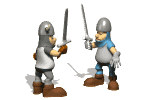
The
Polo Family's Adventures as recorded by Marco Polo, and how Columbus was a fan
![]()
(From Candida: I apologize for some of the trashy adds that appear
in the Google ads on this page. Modern China is very different
from Marco Polo's China.)
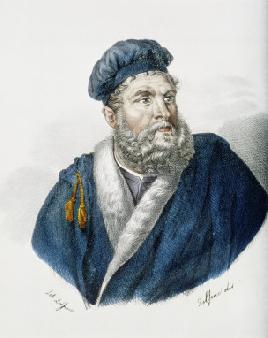
Excerpt 1
Excerpt 2
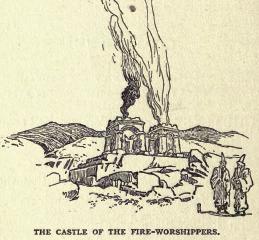
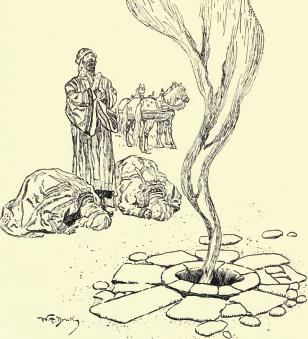
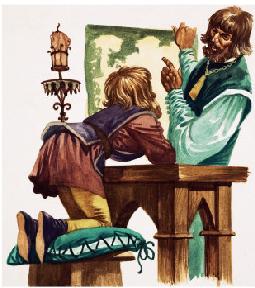
Excerpt 3
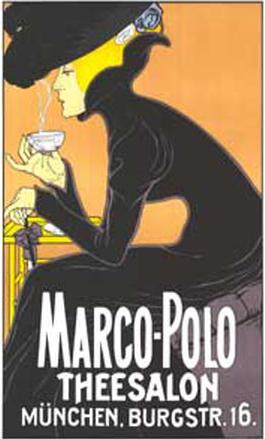

Excerpt 4


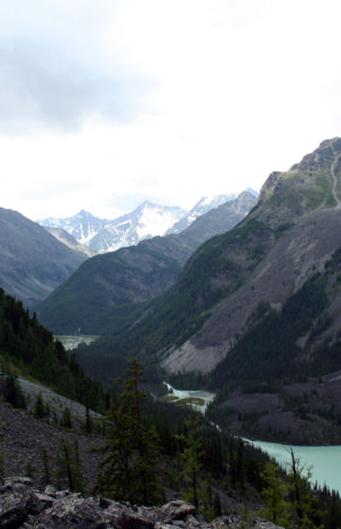
Excerpt 5
Excerpt 6
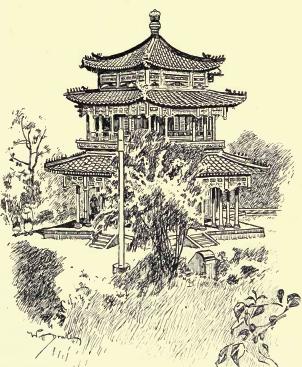
Excerpt 7
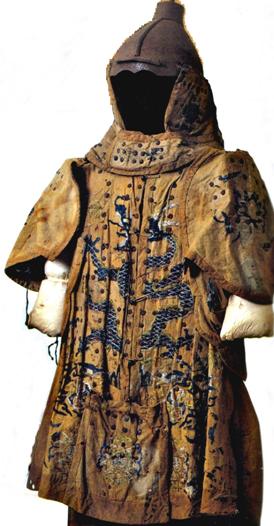
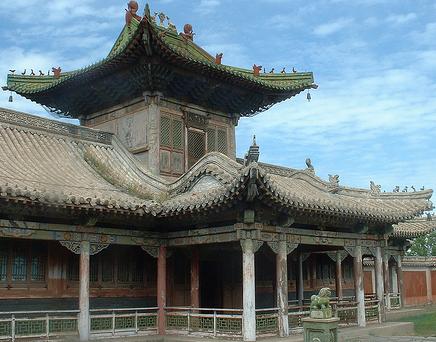
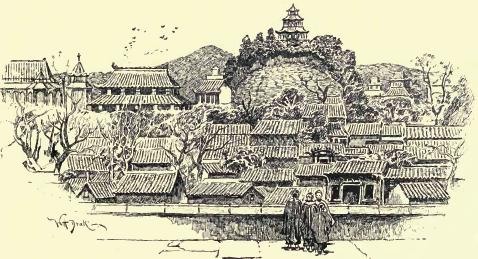
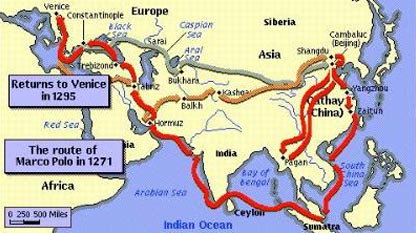
Excerpt 8
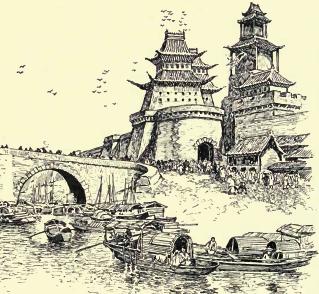
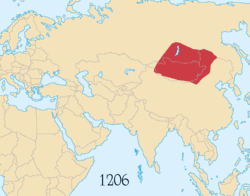
Excerpt 9
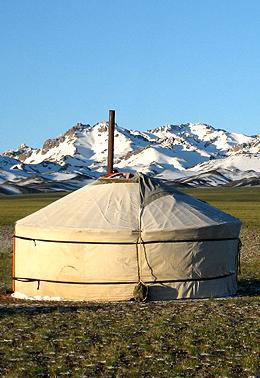

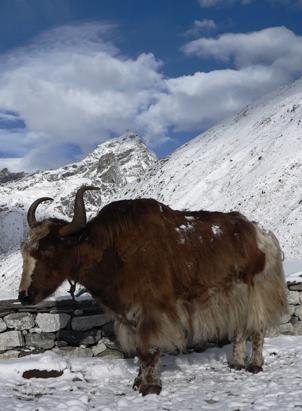
Excerpt 10
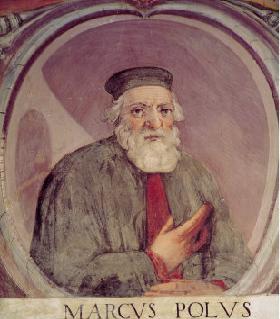
Excerpt 11
Excerpt 12
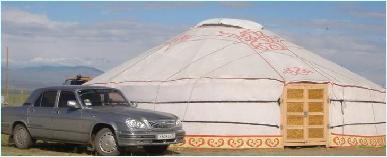
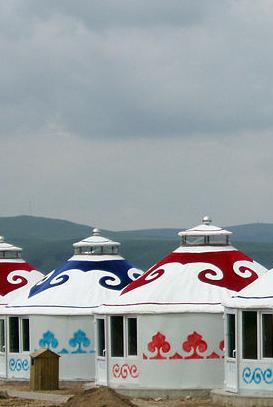
Some Amazon.com
Products
Introduction
Summary of Polo Adventures
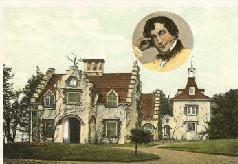


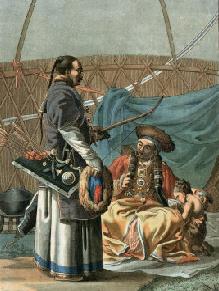
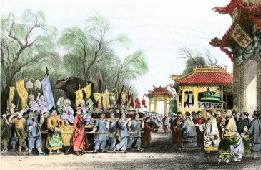


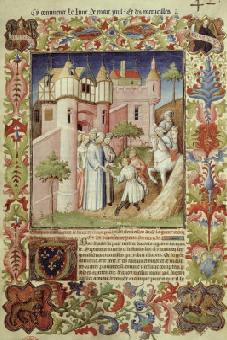
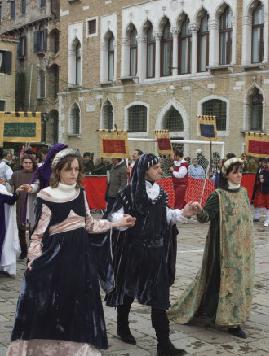
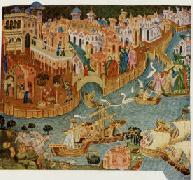
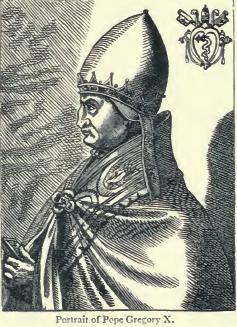
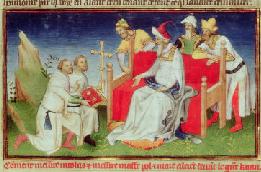
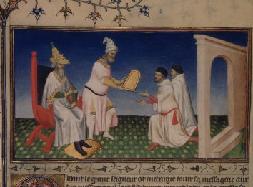
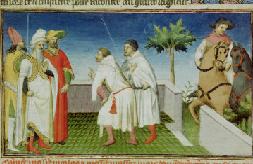
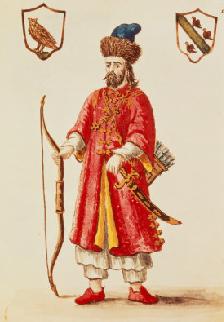
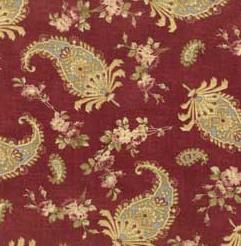
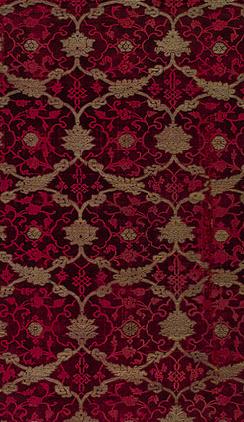
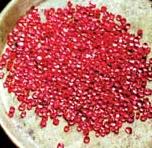
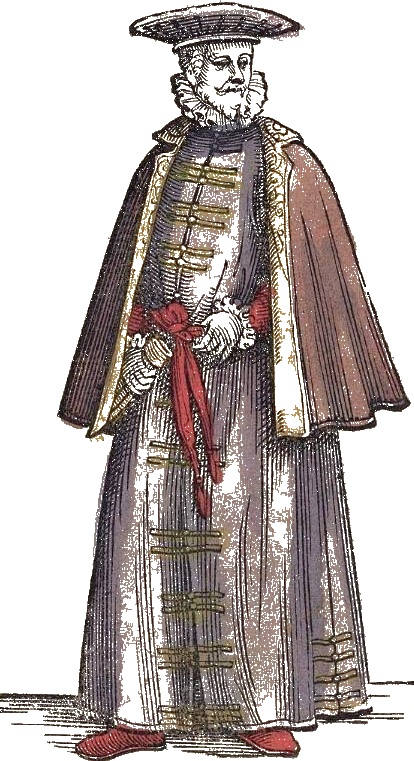
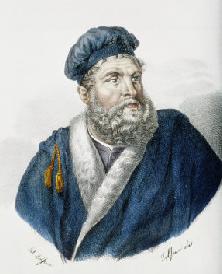
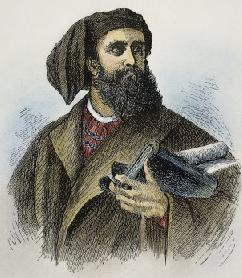
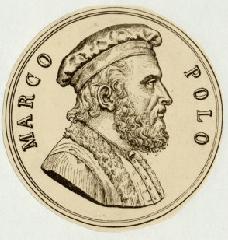
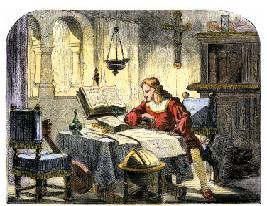

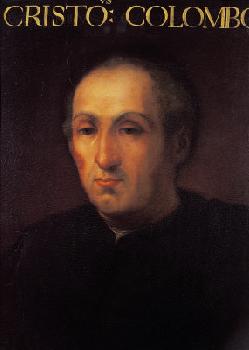
Some Links
